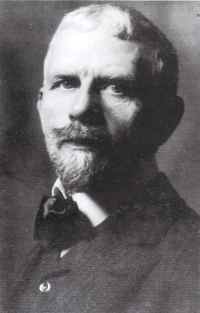Painter, landscapist, teacher, designer

Max Wislicenus was born in 1861 in Weimar. He was a son of historical painter Hermann Wislicenus. Since 1867 he and his family lived in Düsseldorf, as an effect of his father being announced as a Professor of Art Academy there. From 1880 to 1889 he studied painting ,under the guidance of Eduard von Gebhardt and Wilhelm Sohn . After that he continued education in Munich where he was learning under Bruno Pilghein. He travelled a lot, he often visited Karkonosze. He painted surrounding regions of Wroclaw, views of Karkonosze . Many of his works were created during travels to faraway lands like : Estonia, Dalmatia, Bosna, Franconia, Rheinland. In 1894 he married Elsa Freudenberg, who at the end of the year gave birth to his daughter, Gonhilda. In 1896 he became a teacher of drawing and textile art at the Royal college of art and artistic picture in Wroclaw, after 4 years he became professor . He worked there until the retirement in 1921. In 1916-1918 he was also active as a director. In 1903 he organized looms that were administered by his student, later second wife Wanda Bibrowicz. From 1911 to 1921 looms were administered by Elsa Wislicenus née Freudenberg, first wife of artist.
Max Wislicenus painted allegorical, symbolical and religious compositions, portraits, studies of acts and still life. He was also creating decorative arts, designing furnitures, stained glass windows, embroideries, printings and posters. From 1904 he was designing kilims with figural motives. Weaving became as important as painting to him. He was co-founder of Związek Artystów Śląska. During World War I he fought on the eastern front. At that time his focus on painting was war oriented.
From 1918 he ran painting class in Akademia Wrocławska .Year after that, he and Wanda Bibrowicz created tapestry workshop in Pillnitz near Drezen, which was located in local palace. After the retirement, in 1921 he settled in Hosterwitz near Drezen. After his first wife death , in 1948 he married Wanda Bibrowicz. In 1951 couple organized exhibition of their works that survived war, in the Pillnitz. In 1955 he gave away all of his works to the state archive.
He died on 25th of May of 1957, buried in "Maria Am Wasser" cemetery near his wifes.
Before the war Museum Karkonoskie was in possession of monumental paintings of Wislicenus. It was decorative collection panneau called Four Seasons. They were presenting landscapes of Karkonosze. Together with 5th landscape that presented Kamieńczyk waterfall, they were decorating a room at the first floor of Jelenia Góra Museum. History behind creation of interesting and rather eventful. We can trace it thanks to written memories of the President of Karkonoszes Club (ger. Riesengebirgsverein), founder of Museum of Jelenia Góra Hugo Seydel (1840-1932). After 1945 paintings went missing. There was only one left, Winter , it was located in a Dome of high school in Jeleia Góra (currently General education of School of General education nr 1, on Kochanowskiego Steet in Jelenia Góra). Only thing that left are vintage photos. In March of 2010 painting came back to the Museum Karkonoskie in Jelenia Góra and copy of it is decorating wall of school. There is no doubt that Max Wislicenus was one of the greatest representative of secession that worked in Silesia.
He took major part In the development of Silesian landscape painting.